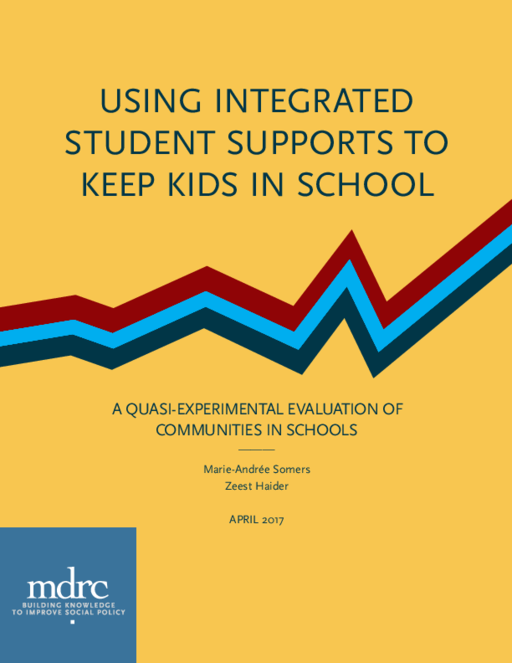Breadcrumb
- Wallace
- Reports
- Using Integrated Student Support...
Using Integrated Student Supports to Keep Kids in School
A Quasi-Experimental Evaluation of Communities In Schools

Overview
More
Less
Summary
About one million students drop out of school yearly. Communities In Schools (CIS), a program active in about 2,500 schools in high-poverty areas of the United States, is trying to reduce that number. Through its network of local affiliates, CIS brings a range of services—from clothing distribution to assistance in applying for college financial aid—to the entire student body at its schools. CIS also provides targeted assistance, such as help in academics and behavior management, to individual students at particular risk of dropping out.
This study looks at the impact of the CIS program over three years on students at 53 elementary, middle and high schools. It compares their rate of improvement in such things as attendance with the rate of improvement for students at similar schools. (This “quasi-experimental” design stands in contrast to a randomized controlled trial design used in a companion evaluation of CIS’s work with the individual students at heightened risk of dropping out.)
The authors report “mixed but promising results.” Among other things, the quasi-experimental study found that attendance rates at CIS elementary schools improved by a statistically significant amount above that of comparison schools. For CIS high schools, the research found that on-time graduation and drop-out rates improved by a statistically significant amount and more so than at comparison schools; the authors could not say with certainty, however, that this stemmed from the CIS program, owing to limitations in the comparison set-up. The study also found that CIS had no impact on middle school attendance and that the schools’ state test scores did not improve, while the comparison schools’ did.

